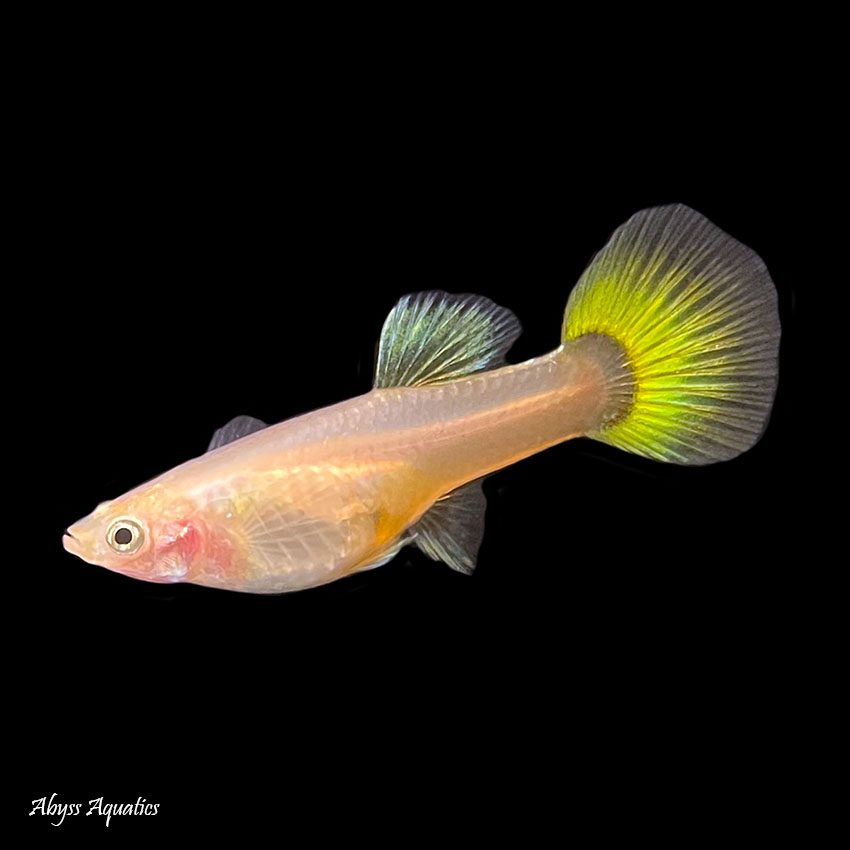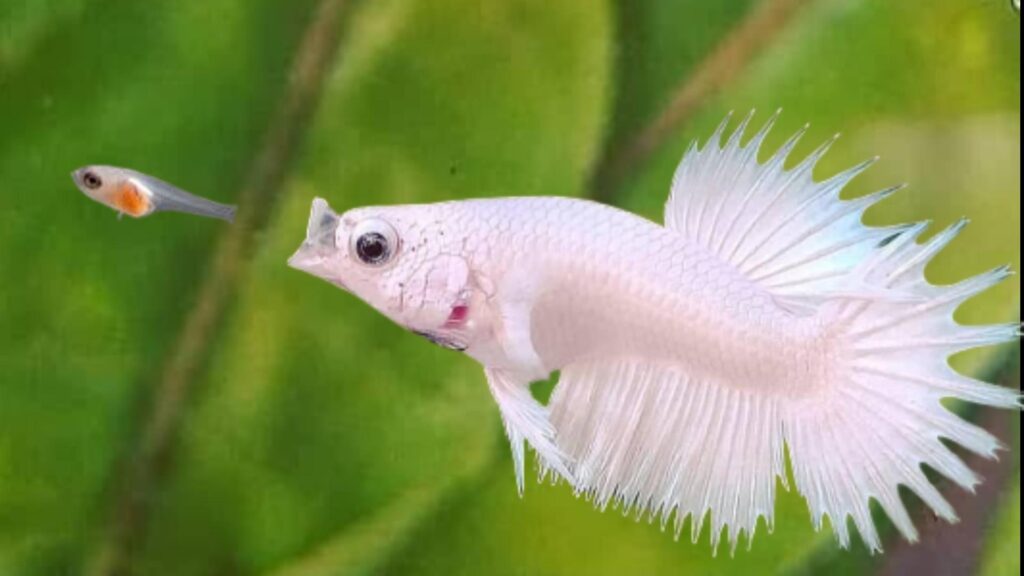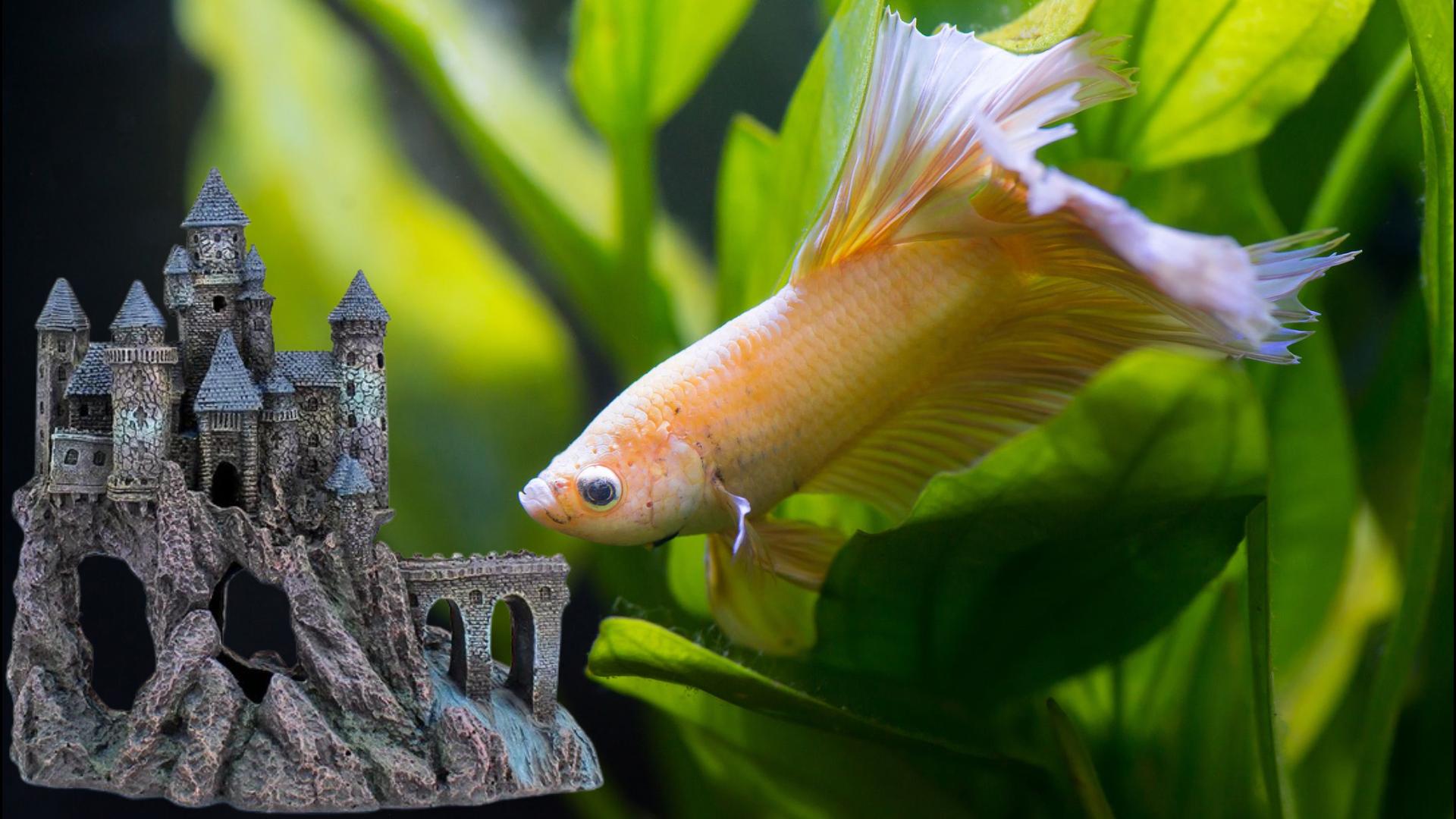Today’s blog is about guppy fish breeding. I have answered 15 interesting questions about guppy breeding in detail in this blog.
Why are guppy fish always horny? Why do guppy fish eat their babies? Do female guppies breed without males? Do betta fish eat guppy fry? Let’s find answers to all these interesting guppy breeding questions.
Guppies are livebearers, which means they give birth to live young rather than laying eggs. These small, colorful fish are native to South America and are popular worldwide due to their vibrant colors and lively nature. In general, breeding guppy fish is a relatively simple process.
They reproduce as long as they are kept with a few males and females in a tank with lots of hiding places for their fry to survive. However, if you would like to learn more about saving more frys and having healthy survival rates on guppy, today’s breeding tips will be useful.
1. Why are male guppies so colorful?
Male guppies have vibrant colors that attract female guppies during the mating season. Males show off and get female attention with bright and eye-catching colors. Male guppies’ intense and brilliant colors are a sign of their overall health and fitness to females. However, being colorful has a downside. In the wild, guppies face constant predator threats. The flashy colors of the males make them more visible and easier targets.
2. Why are guppies always excited and looking for mating?
Guppy fish are always eager to mate due to their biological instincts and reproductive needs. It’s important to understand that guppies do not experience emotions or mating desires like humans do. Male guppies have a specialized reproductive organ called the gonopodium, which helps them transfer sperm to females during mating.
Female guppies reproduce quickly, and females can store sperm for several months. This motivates males to mate frequently to ensure their genes are passed on successfully.

3. How often do guppies breed?
Guppies are known for their prolific breeding habits, and they reproduce more frequently under optimal conditions. In general, female guppies breed every 4 to 6 weeks once they reach maturity. However, it’s critical to note that continuous breeding without proper recovery intervals can negatively impact female guppies’ health and well-being.
4. Can females breed without males in tanks?
Interestingly, the answer is yes. Female guppies store sperm for several months. Although there will be no males in the tank, this will allow them to give birth to multiple broods from a single mating. This is a primary reason for the crazy breeding population of guppy fry.
5. How many frys can a female guppy produce?
A female guppy can produce a lot of fry in a single pregnancy. The exact number of fry can vary depending on factors such as the female’s size and health, as well as tank conditions.
Female guppies can give birth to 20 to 200 fry, depending on the brood size. The number of fry produced by a female guppy is influenced by various factors, including her age, size, and overall condition. Larger and healthier females produce more fry than smaller or less healthy ones.
6. How can you tell if a female guppy is pregnant? – Guppy Breeding
A pregnant female guppy will have a noticeably larger and rounder abdomen than a non-pregnant female. This bulging is caused by the developing frys inside her. Look for a dark triangular-shaped spot located near the lower part of the female’s abdomen.
This spot, known as the gravid spot, becomes more prominent and darker as pregnancy progresses. Pregnant guppies may become less active or spend more time hiding or resting in plants or other hiding spots.
Some pregnant guppies display restlessness, constantly moving around the aquarium and appearing more agitated than usual.
Guppy can produce fries every few weeks for several years. So recognizing the signs of a pregnant guppy is critical for successful fry production. This blog discusses 4 important signs of a guppy giving birth so that you can save your guppy mother and fries.
6.1. Gravid spot
The guppy gravid spot is a dark area located near the anus, specifically under the tail of a female guppy. The spot appears as a darkened or blackish coloration on the female guppy’s abdomen.
But it may appear dark yellow or red color based on your guppy breed. As the female guppy becomes pregnant and her embryos develop, the gravid spot becomes more prominent and noticeable. It darkens in color due to the accumulation of developing babies in the female’s abdomen.
As the time for birth approaches, the gravid spot becomes larger, darker, and more pronounced. It serves as a visual clue that the female guppy is about to give birth.

6.2. Angular belly – Guppy Birth
When a female guppy becomes pregnant, her belly grows as babies develop inside her. As the pregnancy progresses, the abdomen expands, taking on an angular or triangular shape rather than a rounded or oval shape. This is a common sign that a guppy is going to give birth. When the belly becomes more pronounced and exhibits an angular appearance, it suggests that the guppy is indeed pregnant and nearing the end of her pregnancy period. It is important to note that both the gravid spot and the angular belly shape are visual signs that can help determine the pregnancy status of a female guppy.
6.3. Behavior changes
During pregnancy, female guppies tend to hide when they’re about to give birth. They separate themselves from other guppies and find hiding spots among plants or in corners of the tank. This behavior is not normal for guppies, so it’s easy to notice when they start doing it.
They often stay in the corner, away from other guppies and tankmates. Pregnant female guppies become weaker as they get closer to giving birth. To protect themselves from other guppies and tankmates, they may display aggressive behavior.
This aggression can also be a response to stress. When a female guppy is about to give birth, she may refuse to eat because the developing fry takes up space in her abdomen, making her feel full. So, if you notice your pregnant female guppy not eating, it’s also a sign she’s about to give birth.
6.4. Rapid breathing and shivering – Guppy Birth
You may notice that the pregnant female breathes faster than usual. This behavior is typically associated with poor water quality and a lack of oxygen in the tank.
However, in the case of pregnancy in a female guppy, an increased breathing rate can also mean she is under stress and about to release her fry. It is important to note that this behavior may indicate that the pregnant guppy is experiencing some level of discomfort or anticipation as she approaches the birthing process.
Another sign to observe in a pregnant guppy is shuddering or shivering, which is characterized by the female guppy continuously attempting to arch her back in a way that causes her tail fins to turn upside down. This behavior is an indication that the pregnant guppy is undergoing contractions as she prepares to deliver her fry.
7. How long is a guppy fish pregnancy?
It’s critical to note that guppy pregnancy duration can vary, typically ranging from 21 to 30 days. This depends on factors such as water temperature and individual characteristics. Once the pregnancy reaches full term, the female guppy will give birth to live frys.
8. Can guppies breed with other fish species? – Guppy Breeding
Guppies can breed with other fish species within the Poeciliidae family. One common example is crossbreeding with mollies, as they share similarities in appearance and traits.
On the other hand, crossbreeding between guppies and unrelated fish is unlikely due to significant genetic differences. Guppies have specific reproductive compatibility with closely related fish types. It’s critical to consider purebred guppies’ genetic health and conservation when breeding them. Breeding within the same species or closely related species helps maintain guppy population integrity and characteristics.
9. Why do male guppies chase females during mating?
Male guppies often chase females during mating. This behavior helps them court females and allows close contact necessary for sperm transfer. In order to evenly distribute stress among female guppies, it is better to add males and females at a ratio of 1:3. In this way, males in the community tank will calm down and females will avoid restlessness.
10. How long does it take for guppy fry to mature? – Guppy Breeding
Guppy fry matures at different rates, but it usually takes 3-4 months to reach sexual maturity. During this time, they undergo various growth stages and develop vibrant colors. Any guppy fish over 4 months are considered adult and ready for breeding based on their size and health.
11. How to encourage guppy breeding in your aquarium?
To encourage guppy breeding, it is important to maintain optimal conditions such as clean water, an appropriate temperature (around 75-82°F) with a balanced diet. Providing ample hiding spots, such as plants or caves, can also create a conducive environment for breeding.
Keeping the ratio of male to female guppies in a tank at 1:3 is essential, meaning there should be 3 female guppies to every male.
12. Do betta fish eat guppy fry?
Yes, Betta fish are carnivorous predators and may view guppy fry as potential food. But the exact behavior of a betta fish towards guppy fry can vary depending on the individual betta’s temperament and the specific tank conditions.
The fry movements can trigger a betta’s hunting instinct and eat them. Separate them into a different container or tank where they can grow safely without predatory fish like bettas. Alternatively, you can leave the fry in the main tank with the betta or other predatory fish. In this case, predatory fish may help control the fry population as they eat them.

13. Will guppies breed in a community tank? – Guppy Breeding
Yes, guppies are known for their prolific breeding habits, and they can breed in a community tank. Guppies’ reproductive behavior allows them to breed more readily in a community tank than species that lay eggs.
If you have both male and female guppies in your community tank, breeding may happen naturally. This can lead to an increase in the guppy population unless appropriate measures are taken to control the fry count or add predatory fish to eat guppy frys as mentioned in this blog earlier.
14. Why Do Female Guppies Eat Their Babies?
It’s often noticed that female guppies start eating their frys after they give birth. One theory suggests that it could be triggered by stress factors, which activate the fish’s self-preservation instinct. Another explanation is that by eating their own fry, guppies selectively eliminate weaker frys.
Adult guppies, including guppy mothers, often consume their own fry. If you want to maximize the number of fry that survive, it is crucial to separate them from the adults as soon as possible.
15. How to Prevent Guppies from Eating Babies? – Guppy Breeding
Place a plastic breeding container within your main aquarium, which you can purchase online. This keeps the pregnant female guppy separate from other adults. If possible, set up a separate aquarium specifically for the pregnant female guppy.
Fill your aquarium with plenty of live plants and hiding spots where fry can shelter and avoid adult fish eating them.





